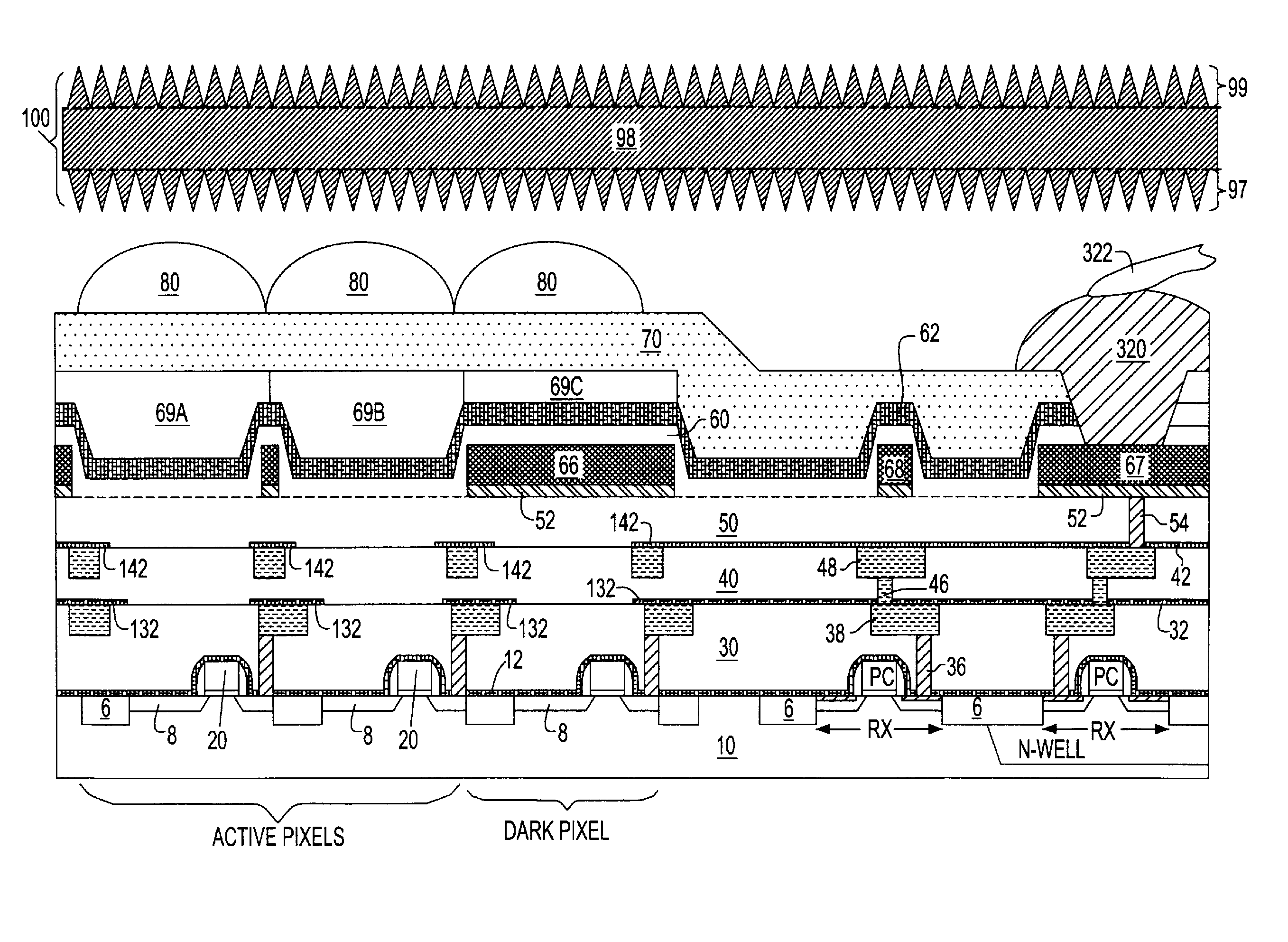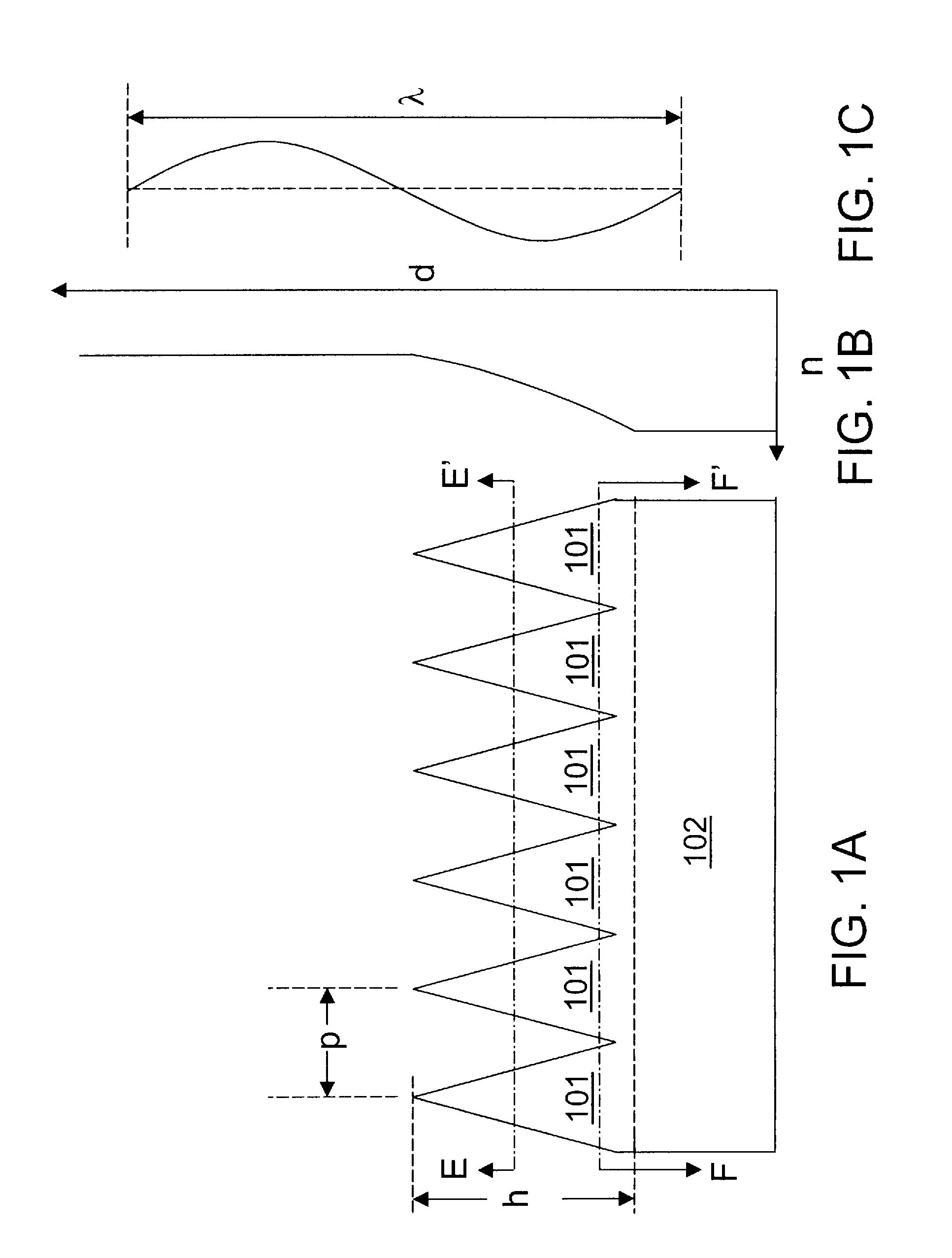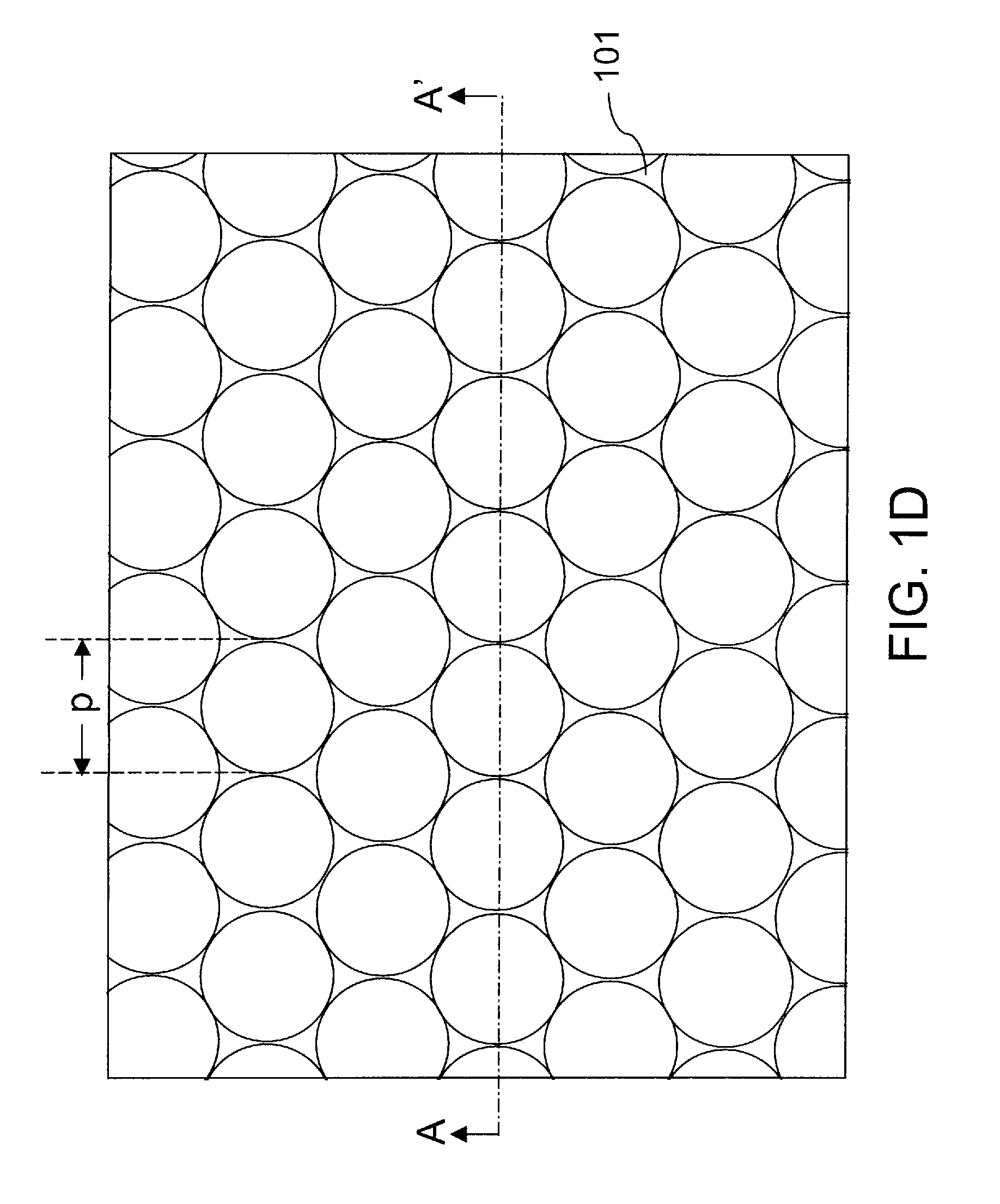Methods For Forming Anti-Reflection Structures For CMOS Image Sensors
- Summary
- Abstract
- Description
- Claims
- Application Information
AI Technical Summary
Benefits of technology
Problems solved by technology
Method used
Image
Examples
second embodiment
[0124]Referring to FIG. 9, an exemplary M2 level metal interconnect structure according to the present invention is shown. The exemplary M2 level metal interconnect structure may be incorporated into the second exemplary semiconductor structure of FIG. 8. The exemplary M2 level metal interconnect structure comprises second metal line (M2) level dielectric layer 40, a V1 via 46, M2 lines 48, and an M2 level dielectric cap layer 42. The V1 via and M2 lines comprise a conductive metal such as W, Cu, Al, etc. The M2 level dielectric layer 40 comprises a dielectric material such as doped or undoped silicon oxide, organosilicate glass, SiCOH dielectric material, a spin-on dielectric material such as SiLK™, etc. The thickness of the M2 level dielectric cap layer 42 may be from about 100 nm to about 2,000 nm, and typically from about 150 nm to about 600 nm, although lesser and greater thicknesses are contemplated herein also. The M2 level dielectric cap layer 42 comprises another dielectric...
first embodiment
[0127]Referring to FIG. 12, the second exemplary semiconductor structure is annealed in the same manner as in the The anneal induces self-aligned separation of a first polymeric block component, which constitutes the polymeric block matrix 112, and a second polymeric block component, which constitutes the cylindrical polymeric blocks 111. The first polymeric block component and the second polymeric block component are immiscible with each other, and thus, separate into the two distinct types of structures, i.e., the polymeric block matrix 112 and the cylindrical polymeric blocks 111 upon the anneal. The polymeric block matrix 112 may have a horizontal cross-sectional shape including an array of cavities in the shape of a polygon, such as a hexagon, or a circle depending on the viscosity and composition of the components of the block copolymer layer 110. Typically, the polymeric block matrix 112 are arranged in a regular periodic array, i.e., in an array structure having a two dimen...
third embodiment
[0135]Referring to FIG. 16, a third exemplary semiconductor structure according to the present invention comprises an exemplary device, which is a portion of a CMOS image sensor pixel. The exemplary device includes a semiconductor substrate 108 and a gate structure for a transfer gate transistor. The semiconductor substrate 108 comprises a p+ doped semiconductor layer 110, a p− doped semiconductor layer 112, and a shallow trench isolation structure 120. The semiconductor substrate 108 further comprises a photodiode and a surface pinning layer 134 having a p-type doping. The photodiode comprises an n-type charge collection well 130 located beneath the surface pinning layer 134 and a p-type well 132, which is a portion of the p− doped semiconductor layer 112 and vertically abuts the p+ doped semiconductor layer 110. The transfer gate transistor is integrally formed with the photodiode (130, 132) such that the n-type charge collection well 130, which comprises an n+ doped semiconductor...
PUM
 Login to View More
Login to View More Abstract
Description
Claims
Application Information
 Login to View More
Login to View More - R&D
- Intellectual Property
- Life Sciences
- Materials
- Tech Scout
- Unparalleled Data Quality
- Higher Quality Content
- 60% Fewer Hallucinations
Browse by: Latest US Patents, China's latest patents, Technical Efficacy Thesaurus, Application Domain, Technology Topic, Popular Technical Reports.
© 2025 PatSnap. All rights reserved.Legal|Privacy policy|Modern Slavery Act Transparency Statement|Sitemap|About US| Contact US: help@patsnap.com



